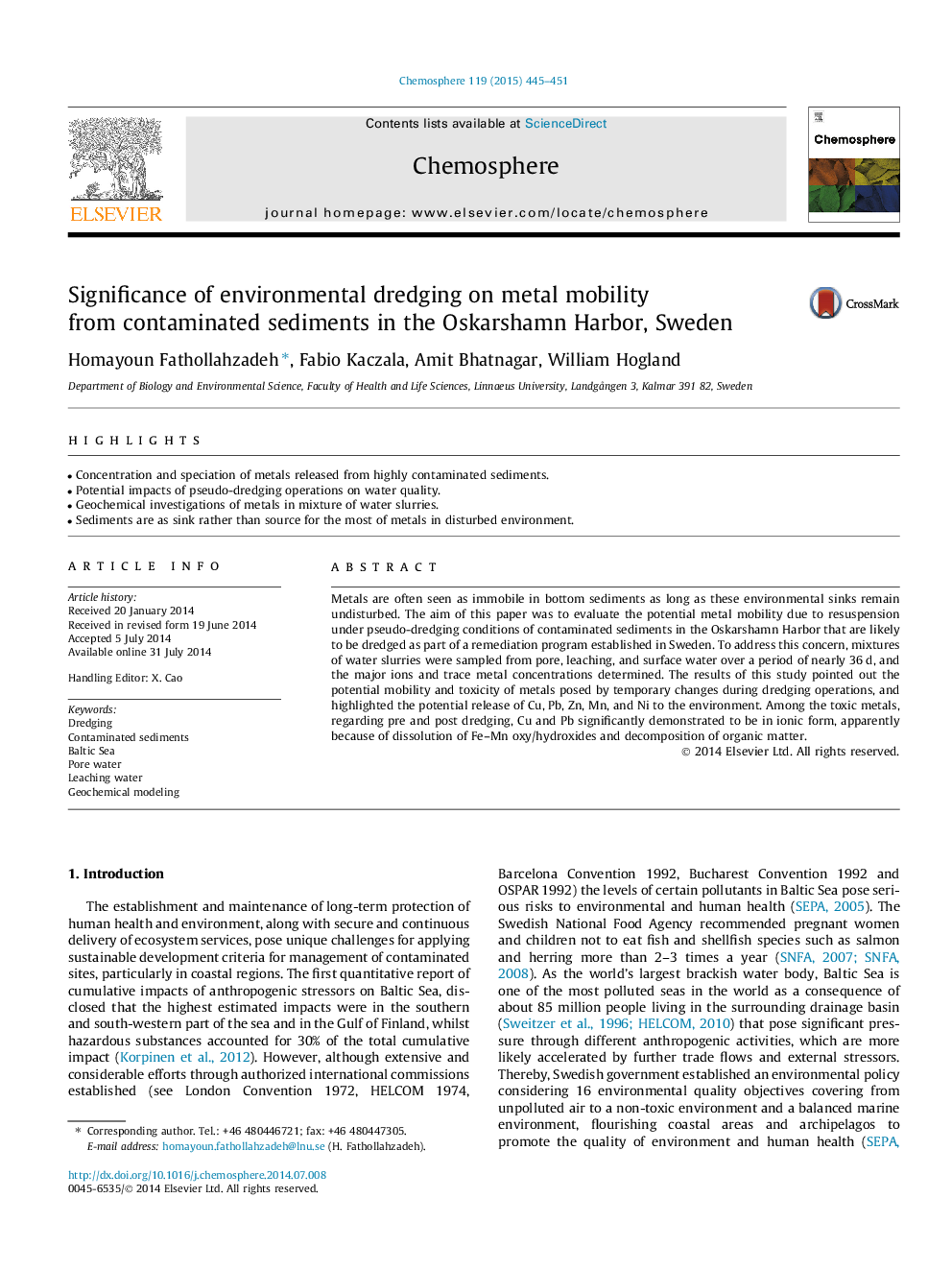| Article ID | Journal | Published Year | Pages | File Type |
|---|---|---|---|---|
| 4408653 | Chemosphere | 2015 | 7 Pages |
•Concentration and speciation of metals released from highly contaminated sediments.•Potential impacts of pseudo-dredging operations on water quality.•Geochemical investigations of metals in mixture of water slurries.•Sediments are as sink rather than source for the most of metals in disturbed environment.
Metals are often seen as immobile in bottom sediments as long as these environmental sinks remain undisturbed. The aim of this paper was to evaluate the potential metal mobility due to resuspension under pseudo-dredging conditions of contaminated sediments in the Oskarshamn Harbor that are likely to be dredged as part of a remediation program established in Sweden. To address this concern, mixtures of water slurries were sampled from pore, leaching, and surface water over a period of nearly 36 d, and the major ions and trace metal concentrations determined. The results of this study pointed out the potential mobility and toxicity of metals posed by temporary changes during dredging operations, and highlighted the potential release of Cu, Pb, Zn, Mn, and Ni to the environment. Among the toxic metals, regarding pre and post dredging, Cu and Pb significantly demonstrated to be in ionic form, apparently because of dissolution of Fe–Mn oxy/hydroxides and decomposition of organic matter.
